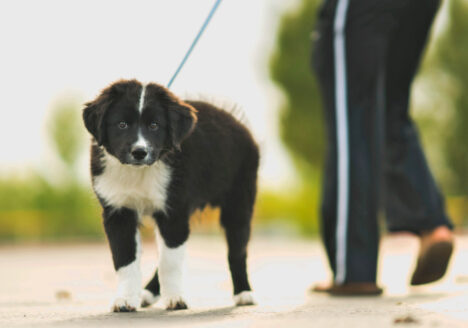Uh Oh! I Found a Lump on My Dog: Dr. Kristin Couto and What’s Next
Central Oregon now has a pet oncologist
Veterinary Referral Center of Central Oregon went live on Facebook to introduce Dr. Kristen Couto, veterinary oncologist, and talk about what to do when you discover a lump on your dog. Catch the whole discussion in the video below:
It’s a scary moment: you’re petting your bestie and suddenly there’s a mass that wasn’t there before. The first thing to know, according to Dr. Couto, is that a lump isn’t necessarily cancerous, or even particularly problematic. Dogs (especially older dogs, and some breeds more than others) commonly develop benign cystic masses or lesions that don’t warrant major concern. Even if the lump turns out to be a harmless fatty lipoma, however, it does need to be investigated by your vet to rule out the possibility of cancer, and to treat it immediately if it is. So, the first step is to:
Schedule an appointment
Typically, says Dr. Couto, your vet will want to do a fine needle aspiration, which amounts to a series of pokes with a small needle to extract a sample of cells from the mass, which is then transferred to a slide for analysis. If it turns out that the lump is a benign fatty lipoma or other non-cancerous lesion, you and your vet can decide on whether or not treatment is even necessary.
Sometimes, a fine needle aspiration is ineffective in getting a proper sample. Dr. Couto described the difference between inserting a needle into a juicy orange, versus into a tart apple. The orange will spray juice, producing a sample that’s easier to capture and study, while the apple might give up very little. In this case, or if the initial analysis in inconclusive, another procedure is necessary to make an accurate assessment of the lump.
Next step: Biopsy
A biopsy, or more precisely, an incisional biopsy, removes a piece of the mass to submit for analysis. Your vet uses a punch biopsy instrument—a little like a paper hole punch—to scoop out a sample.
Why do a fine needle aspiration first, or at all, if a biopsy is ultimately more effective? According to Dr. Couto, the fine needle aspiration is less invasive (the biopsy requires an incision and a couple of stitches, plus a short recovery time), as well as less expensive. Also, if the mass behaves like an orange and not like an apple, the less invasive procedure may be all that’s required to discover that a mass is benign.
You vet may recommend starting with the biopsy if she feels that’s the surest and most direct course of action.
If it’s cancer
Whether it is determined that the cancer is a mast cell tumor, soft tissue sarcoma, or other type of cancer, surgical removal is often the next step. Your veterinary oncologist can explain and discuss all your treatment options. A new arrival to Central Oregon after seven years of veterinary oncology training, Dr. Couto specializes in all types of cancer-specific care at VRC. She is, in fact, Central Oregon’s only oncology specialist and we are thrilled to have her on our team.
If it’s not cancer, but down the line you notice a change in the lump
Schedule an appointment! Sometimes cancer can disguise itself or “hide” in a fatty lipoma. Call your vet if you observe:
· Rapid growth in a pre-existing mass
· Ulceration
· Bleeding or oozing
It can be helpful to remember that some dogs are just extra lumpy-bumpy, says Dr. Couto. She recommends printing out a body map of your dog, so you and VRC can track any development and changes, and keep an eye on those worrisome lumps.
Download a Pet Body Map
Use this body map to track your pet’s skin masses noting the date you found the mass along with characteristics (soft, firm, ulcerated). This will help you and your veterinarian keep track. Download here.



